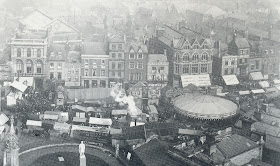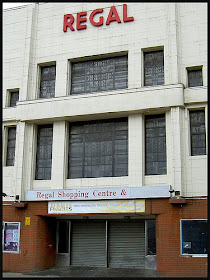Below left: Smith's Court, Wormgate Boston.
“Rasputin” was one of his nicknames probably from the fact of his dirty long hair which fell upon his shoulders with a beard to match. He didn’t use the upper room of his house and the “furniture” of the ground floor consisted of two boxes and some old potato sacks for a bed. The only ornamentation of his dwelling were twenty or so empty match-boxes on the mantelpiece.
The neighbours said that he retired to rest at about 5 p.m. and did not rise until about 10 a.m. when he made his appearance at the tap in the courtyard to get water for his meal of bread and cold water.
He often walked briskly around the town and was the object of much ridicule from the children of the town who called him “Crow’s Nest”. He was a pathetic figure, scantily attired in old greasy clothes in the coldest weather, and it was said he never had a fire. His hair and beard were never cut for he said it was against nature and that dogs, cats, beasts etc. never have their hair cut. Yet he was once a hairdresser!!




















































